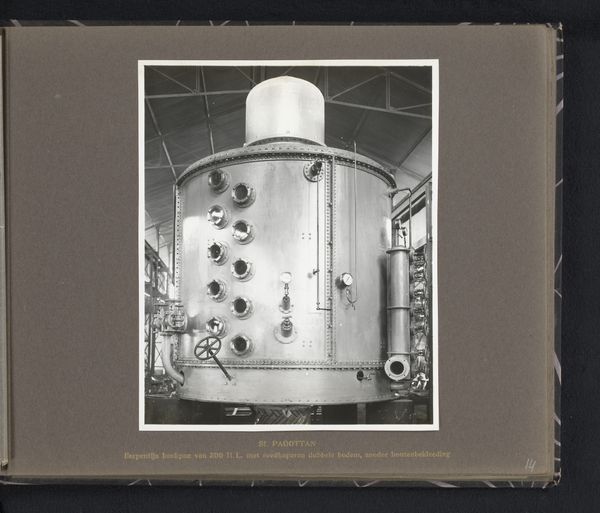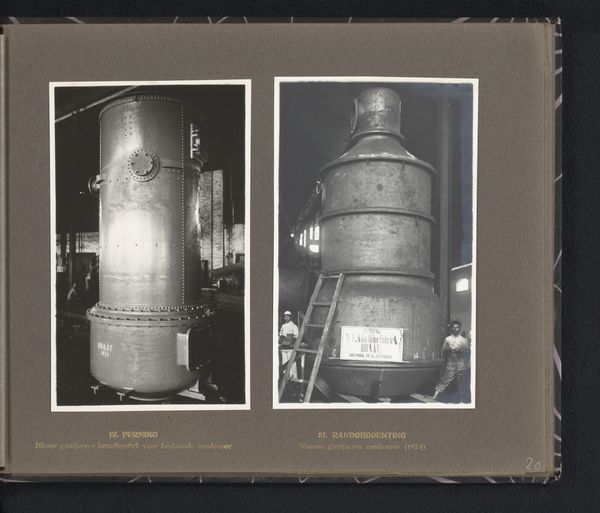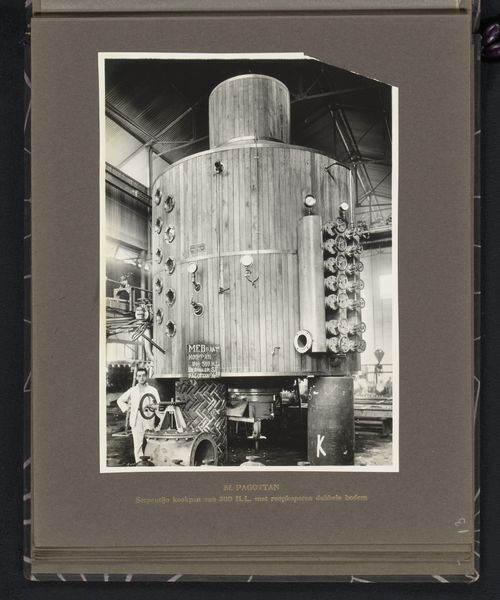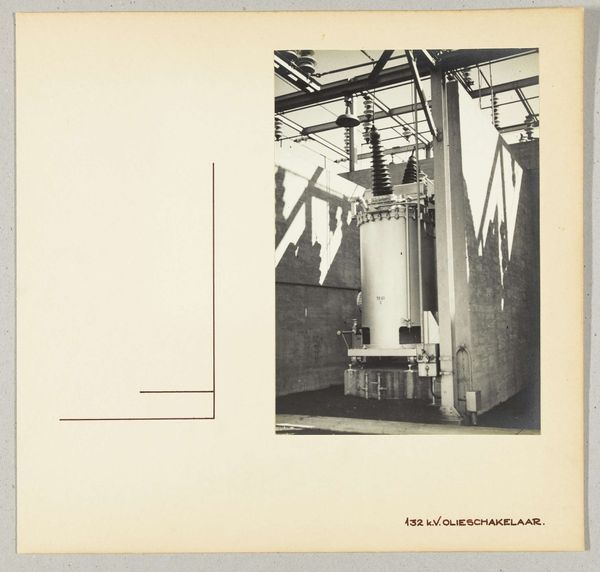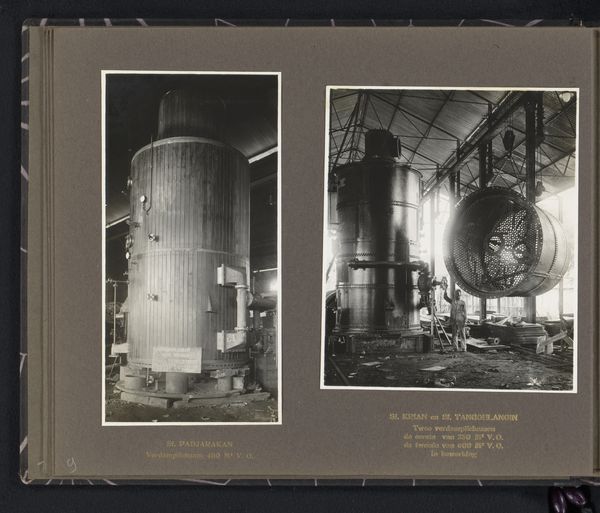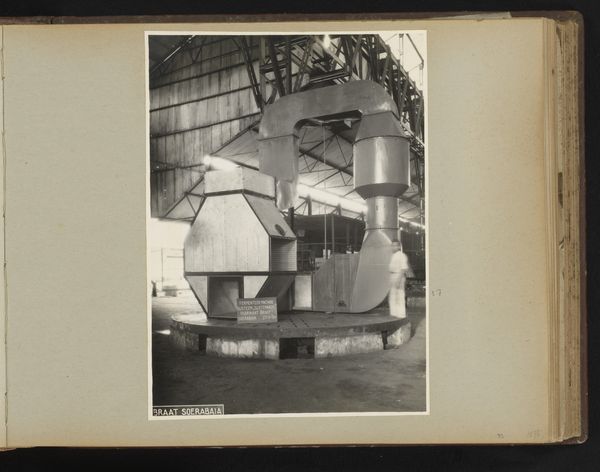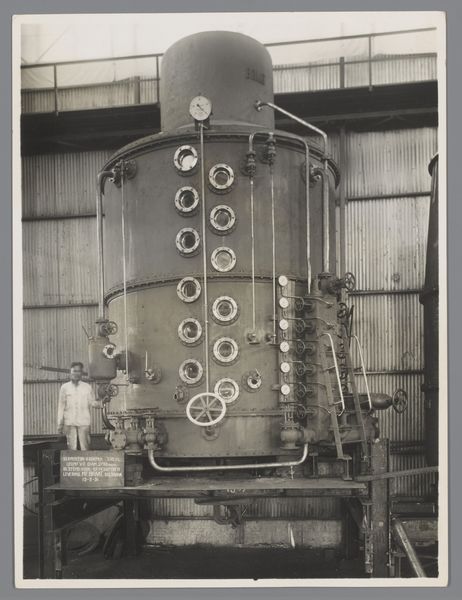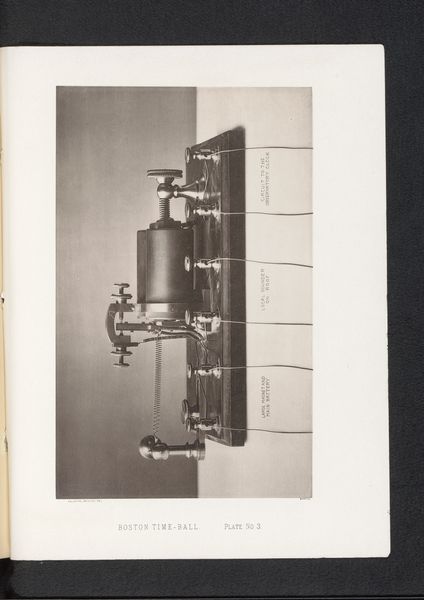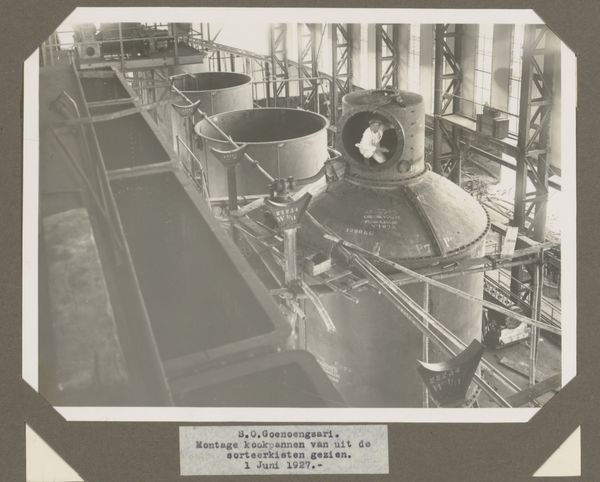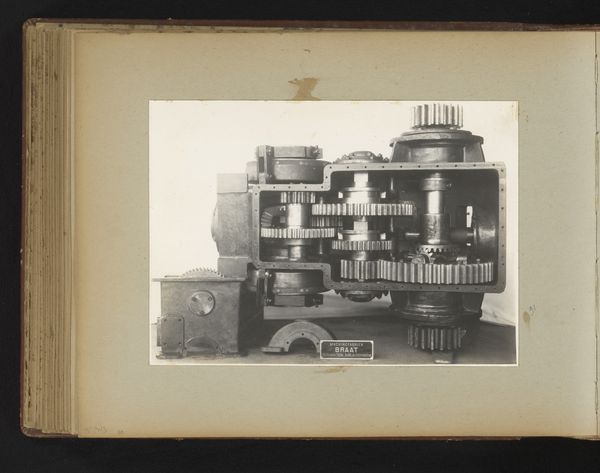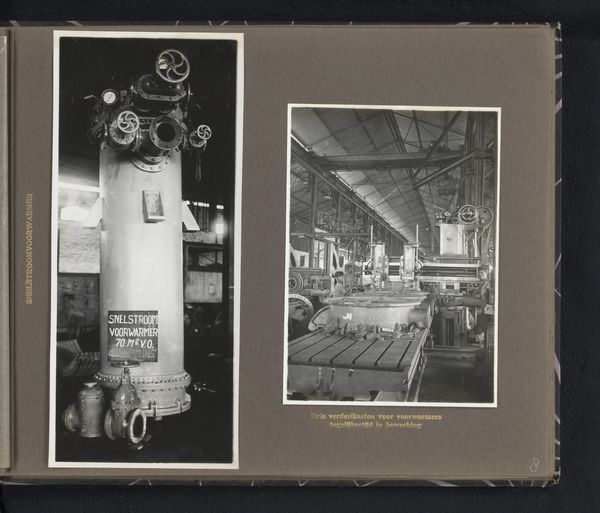
print, photography
# print
#
photography
Dimensions: height 206 mm, width 155 mm, height 240 mm, width 290 mm
Copyright: Rijks Museum: Open Domain
Curator: What grabs me here is that this seemingly straightforward image, "Boiler for the Tangoelangin Sugar Factory, Java, 1916," transcends mere documentation. It’s a photograph, but more profoundly, it's about labor and industry during the colonial era. Editor: It's very imposing. The boiler dominates the frame, but it feels almost… clinical, in a way? It makes me think about how these machines were part of larger industrial processes, almost divorced from human interaction. How would you interpret that in terms of materiality? Curator: I'm fascinated by the evidence of production it reveals. Think about the construction: each rivet, pipe, and valve tells a story of fabrication and assembly. And this wasn’t happening in a vacuum. This boiler symbolizes the intense industrial extraction occurring in Java at the time, feeding global markets. We need to consider who built this machine and the conditions they worked under. Editor: So you're seeing this photo as a trace, evidence of specific labor practices rather than just an image of a machine. It seems like a pretty straightforward image… do you find a more hidden class message as well? Curator: Absolutely. The photograph hides a multitude of actions of the human workforce, the exploitation inherent in the colonial system, and the export of resources. This wasn't about celebrating local artistry, but about extracting value and shifting wealth elsewhere. Editor: Wow, I didn't think I could look at a boiler in such an interesting and complex way. Seeing the factory, I wasn't thinking of human extraction... Thank you for helping me get the broader context of the factory process. Curator: My pleasure. It shows how something as mundane as industrial machinery becomes powerful when examined through a material lens, illuminating the historical context of production and exploitation.
Comments
No comments
Be the first to comment and join the conversation on the ultimate creative platform.
